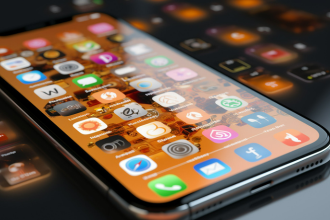
Introduction to the analysis of data from...
UX data analysis consists of systematically examining and interpreting user data in order to...

In an increasingly competitive digital environment, delivering personalized experiences is no longer an option, but a strategic necessity. Nicolás CasariegoHead of MarTech at NATEEVOshares with us the keys to building an effective omnichannel personalization strategy: from how to get started, what technologies and methodologies to use, to what trends to adopt today so as not to be left behind. An essential conversation for any brand looking to generate real and lasting value through the customer experience.
Why is omnichannel personalization a strategic priority today for brands that want to better connect with their customers?
Customization omnichannel has become a strategic - and critical - priority for brands looking to better connect with their customers. This is because it generates value for both the customer and the company. On the one hand, consumers expect relevant and consistent communications that are tailored to their interests and needs, regardless of the channel through which they interact. They want to feel understood and valued, and that can only be achieved when the experience is consistent and personalized at every touchpoint. On the other hand, brands that adopt an omnichannel personalization strategy experience sustained improvements in all their key metrics: open rates, clicks, conversion, loyalty and, ultimately, higher ROI. It's not just about communicating, it's about building long-term valuable relationships.
How can companies enable personalized experiences across channels?
The first step to achieve truly effective omnichannel communication is to have a well-defined loyalty strategy. It is not enough to have the right technology; many brands have it, but lack a strategy to make its potential tangible. To achieve this, it is essential to build a 360º knowledge of the customerThe main objective is to know their preferences, both observed and declared, understand their interests and adapt content accordingly. In this context, the so-called magnetic contents play a key role: it is no longer about users traveling to content, but about content traveling to them, appearing at the right time and in the right channel. This represents the first relevant experience for the customer. But for this to work, we need a formal taxonomy that allows us to label and classify content, establish clear business rules and define what is relevant for each user at each moment.
What trends should brands adopt now to avoid being left behind?
Brands that do not want to be left behind must now embrace two major trends driven by artificial intelligence. The first, and already in full expansion, is the Generative AIbased on extensive language models that allow for agile, productive and efficient personalization at scale. This translates into the automatic creation of content - from text to images - that adapts to each user and channel, accelerating production times and improving relevance.
The second, still at an earlier stage, but with enormous potential, is what is known as the AI Decisioning. This trend consists of using predictive AI to design and execute complex experiments on a continuous basis, not only in content, but also in channels, key moments of the customer journey, offers and formats. In essence, it is about creating living, adaptive and personalized campaigns. customer by customerThe software is able to evolve in real time based on user data and behavior.
What is the first step to start personalizing omnichannel communication effectively?
At NATEEVO, we help brands through four main blocks: defining the strategy, making the deployment in a MarTech architectureWe have a personalization methodology that includes the entire life cycle, from the conception of the experience in the UX/UI, branding, execution, measurement and finally in the optimization part. We have a personalization methodology that includes the entire lifecycle, from conceiving the experience in the UX/UI part, Branding, execution, measurement and finally in the optimization part.
Let's talk and let's explore together the possibilities of omnichannel personalization strategies.

Introduction to the analysis of data from...
UX data analysis consists of systematically examining and interpreting user data in order to...

Do you know what calm technology is? A technology that promotes a more rational, effective and non-intrusive relationship with...

Barceló Hotel Group: finalista en el...
Una nueva edición del Digital Enterprise Show (DES 2025) en la que desde NATEEVO formamos junto a nuestro cliente...